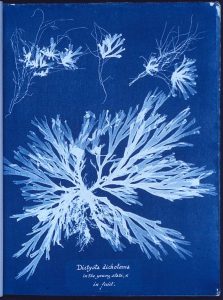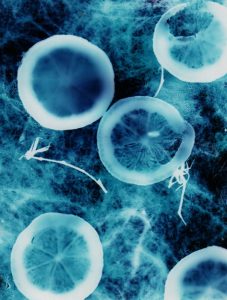Chapter 7: Scanning
Download Materials for Chapter 7

The first photograms were made by photographic pioneers, William Henry Fox Talbot and Anna Atkins in the mid-1800s. Photograms are made by placing objects on sensitized paper, exposing the objects and paper to light, and processing the paper to reveal the print. A camera is not necessary for the production of this type of graphic image; and the result is more like an abstract impression of the object than a highly detailed rendering. A scanogram is the digital method of producing a “contact” image, similar to a photogram, using a flatbed scanner. Like a photogram, a scanogram is made by placing objects on the “sensitized area,” or the scanner bed, where the surface is exposed to the digital capturing devices that generate a file.

Photograms have been made by artists (see Anna Atkins’ renderings of natural elements or Man Ray, Lissitzky and Moholy-Nagy’s collages) and by commercial designers (see Paul Rand’s package design and book jackets). The process is fun to explore, because the result always differs from the artist’s expectations.

